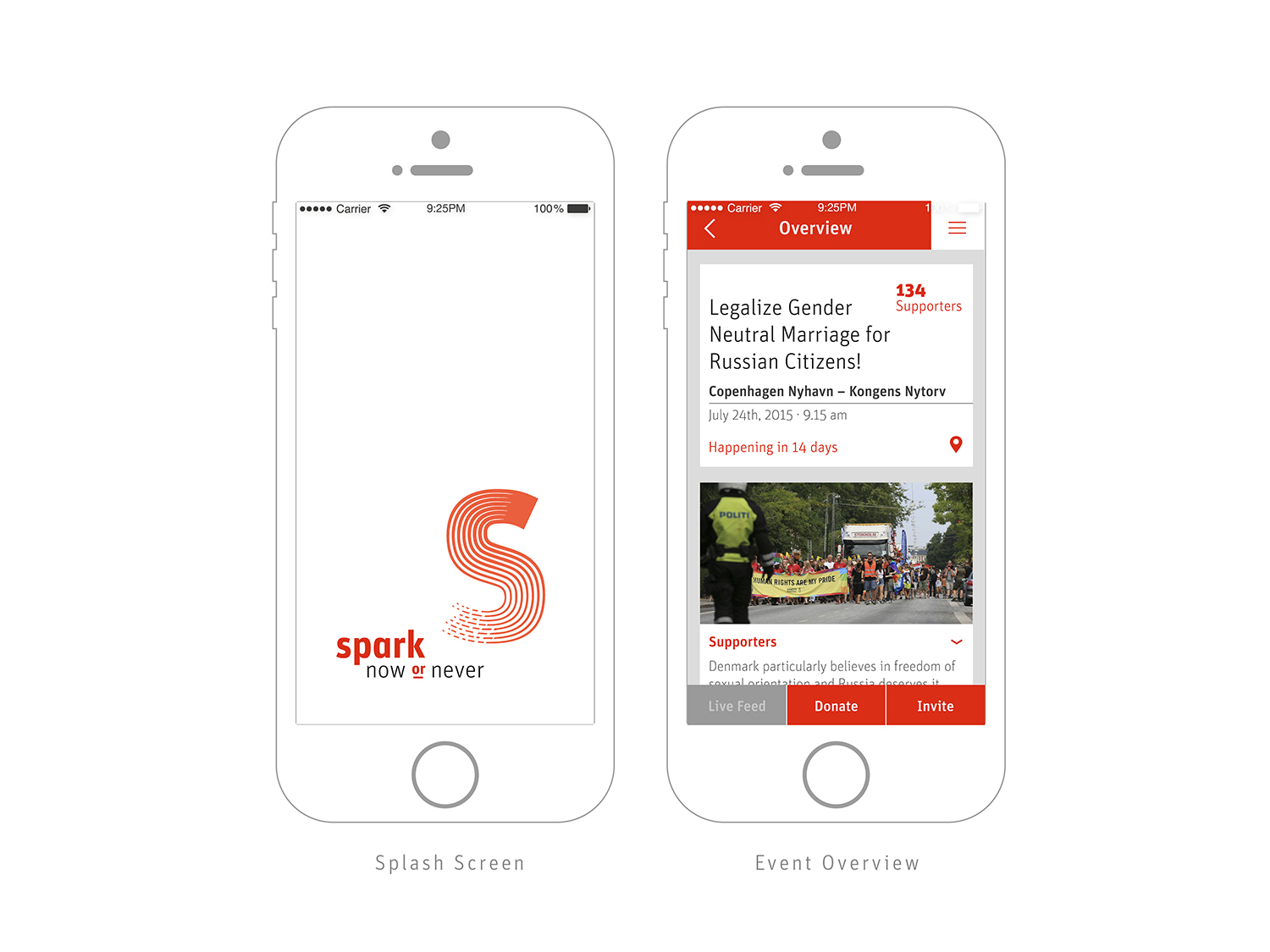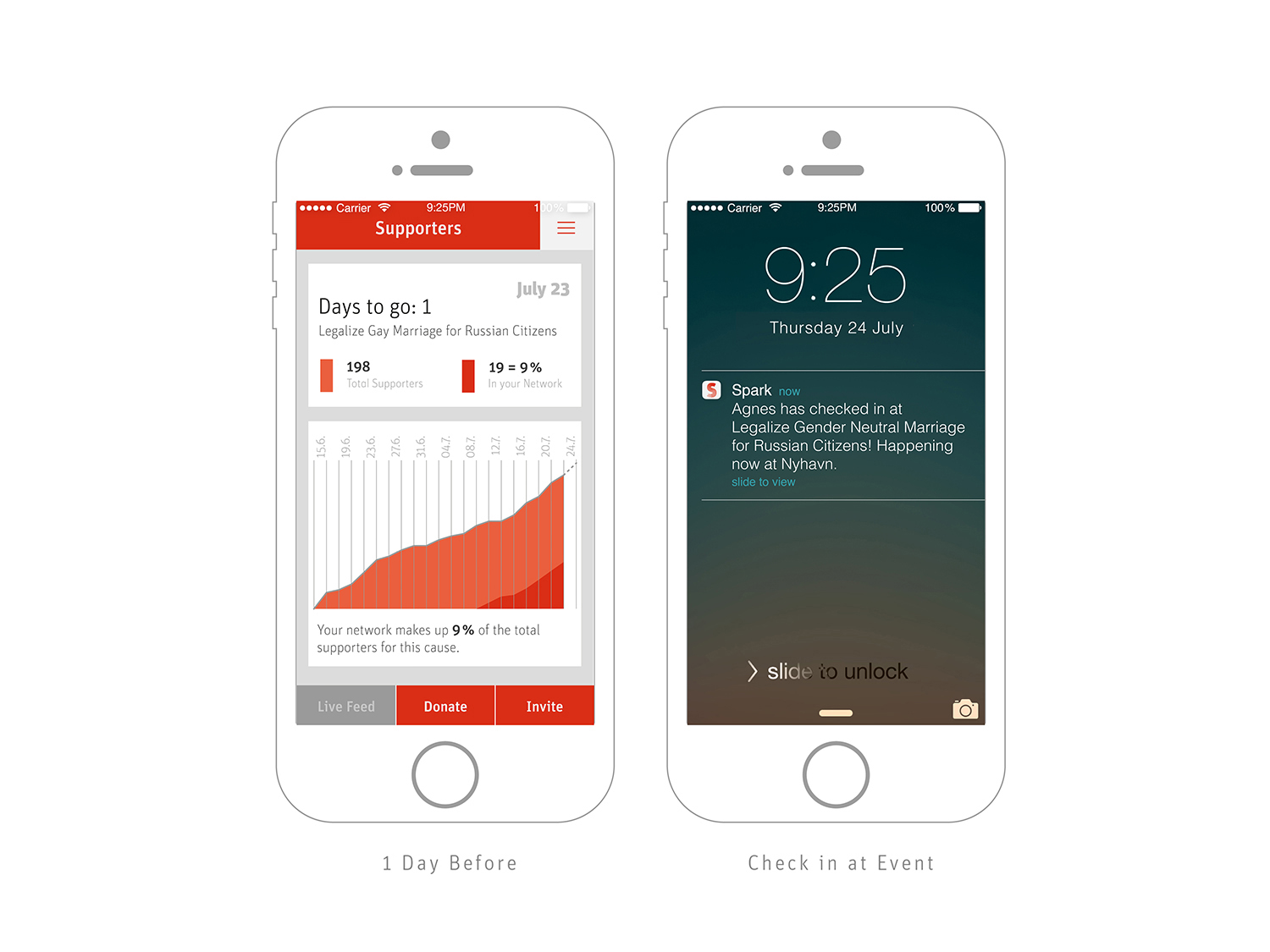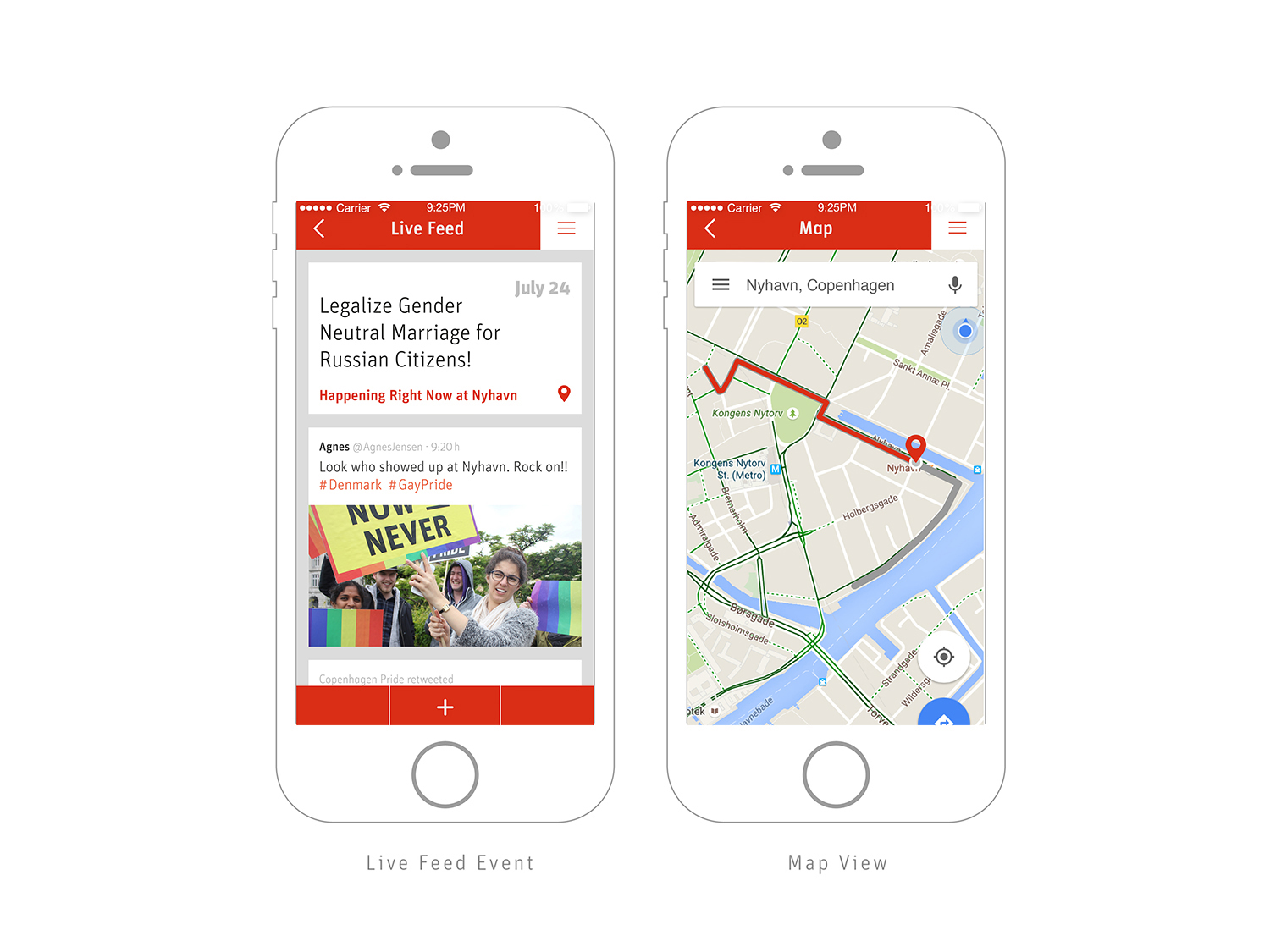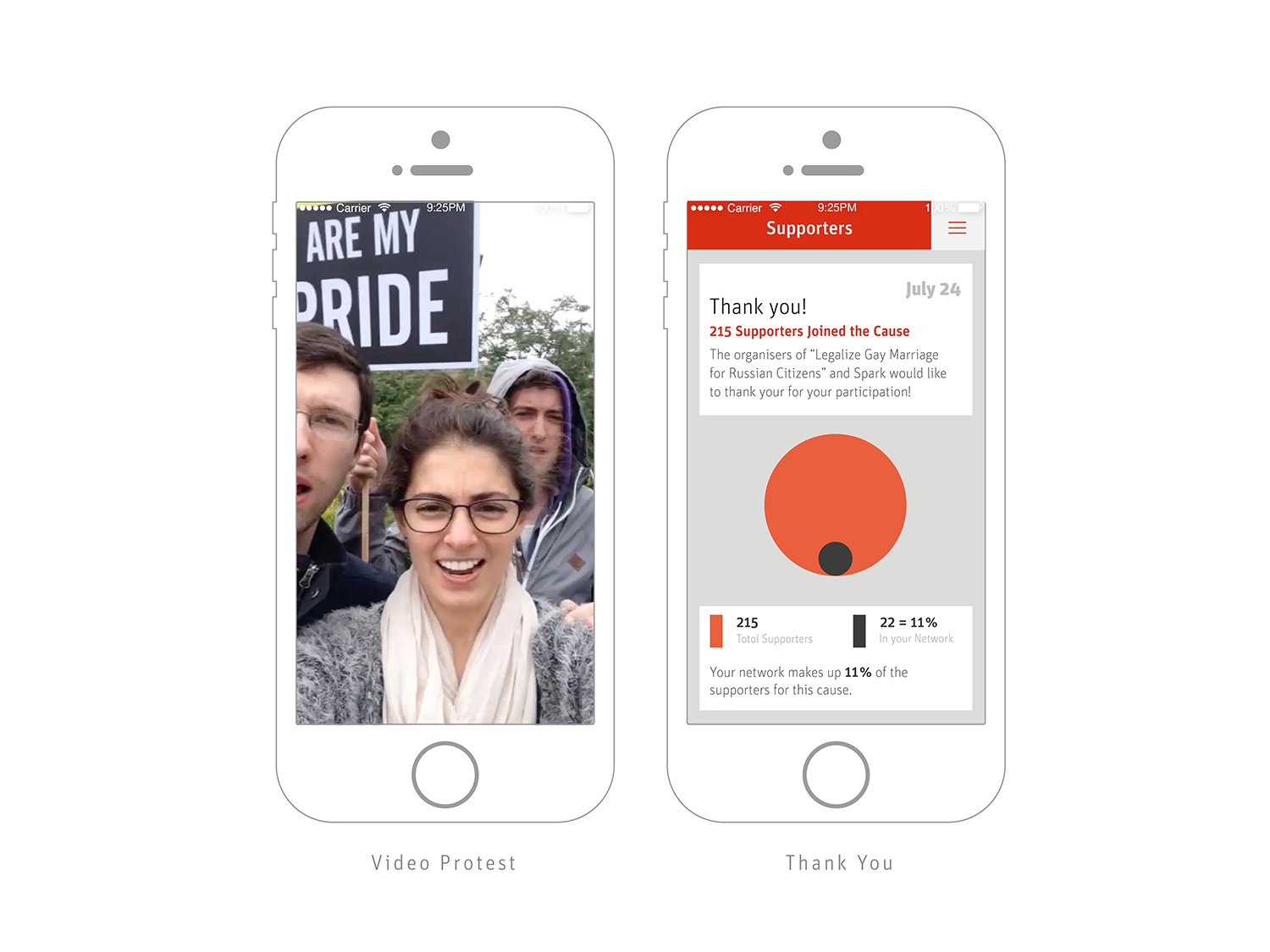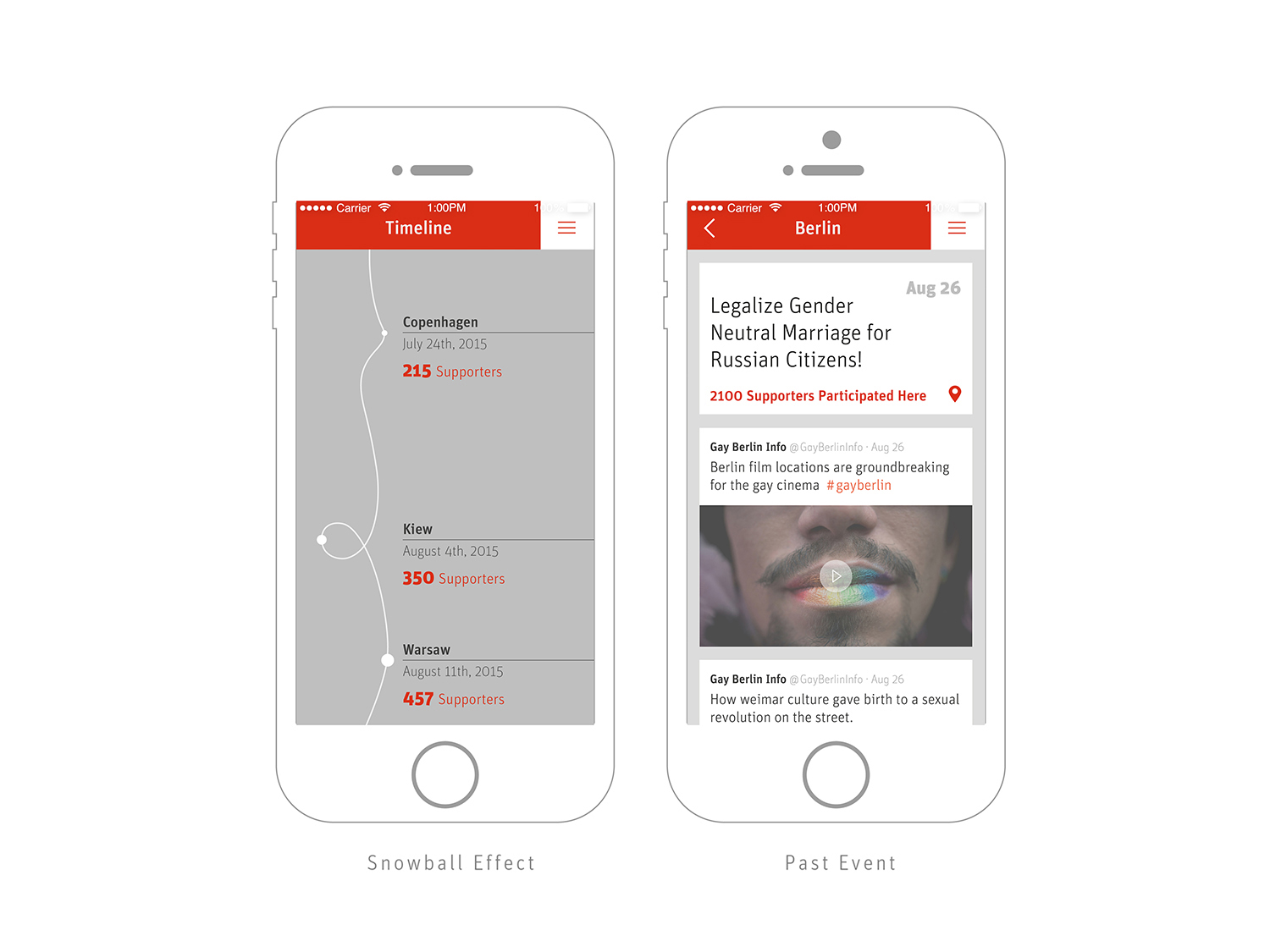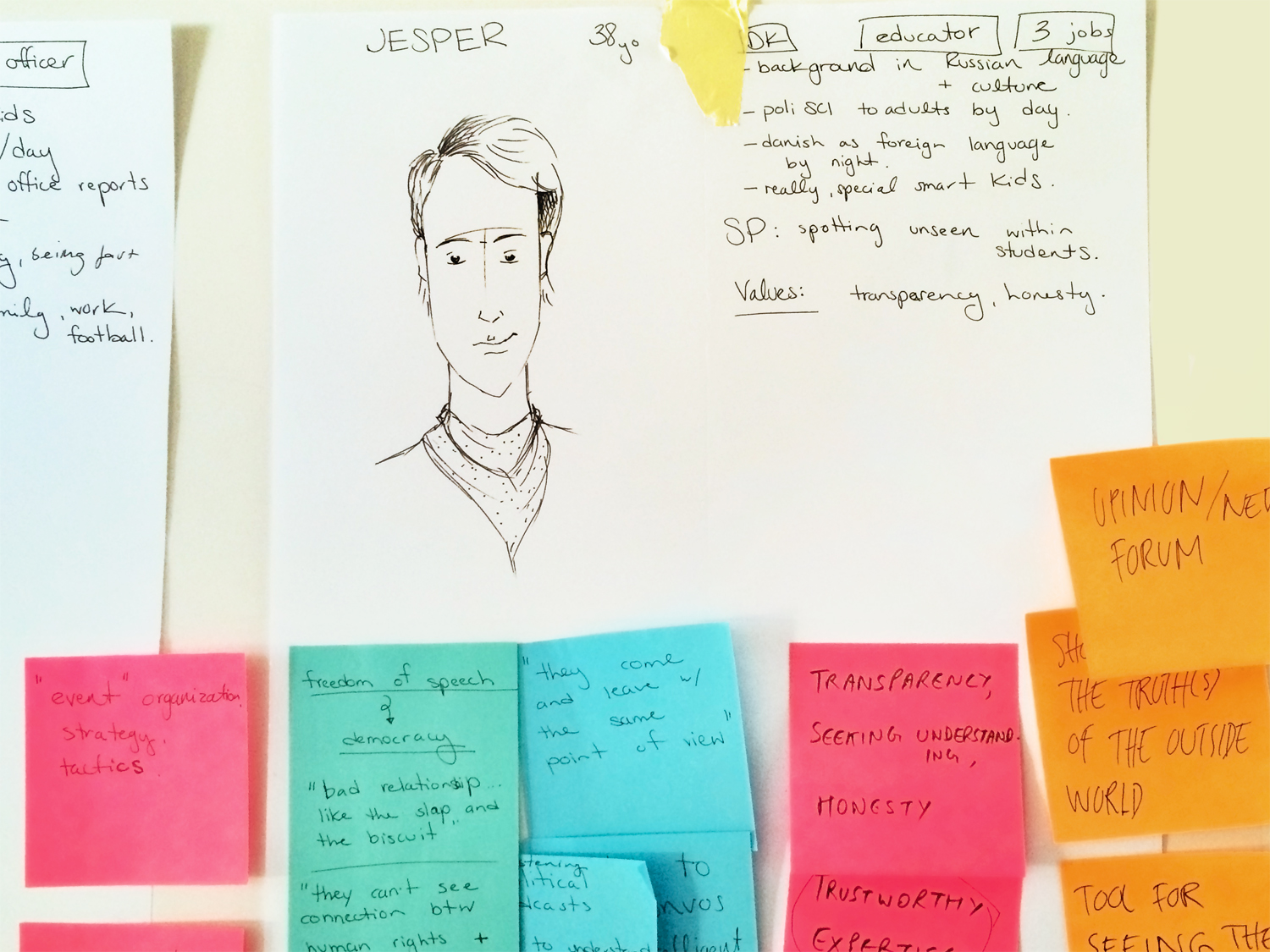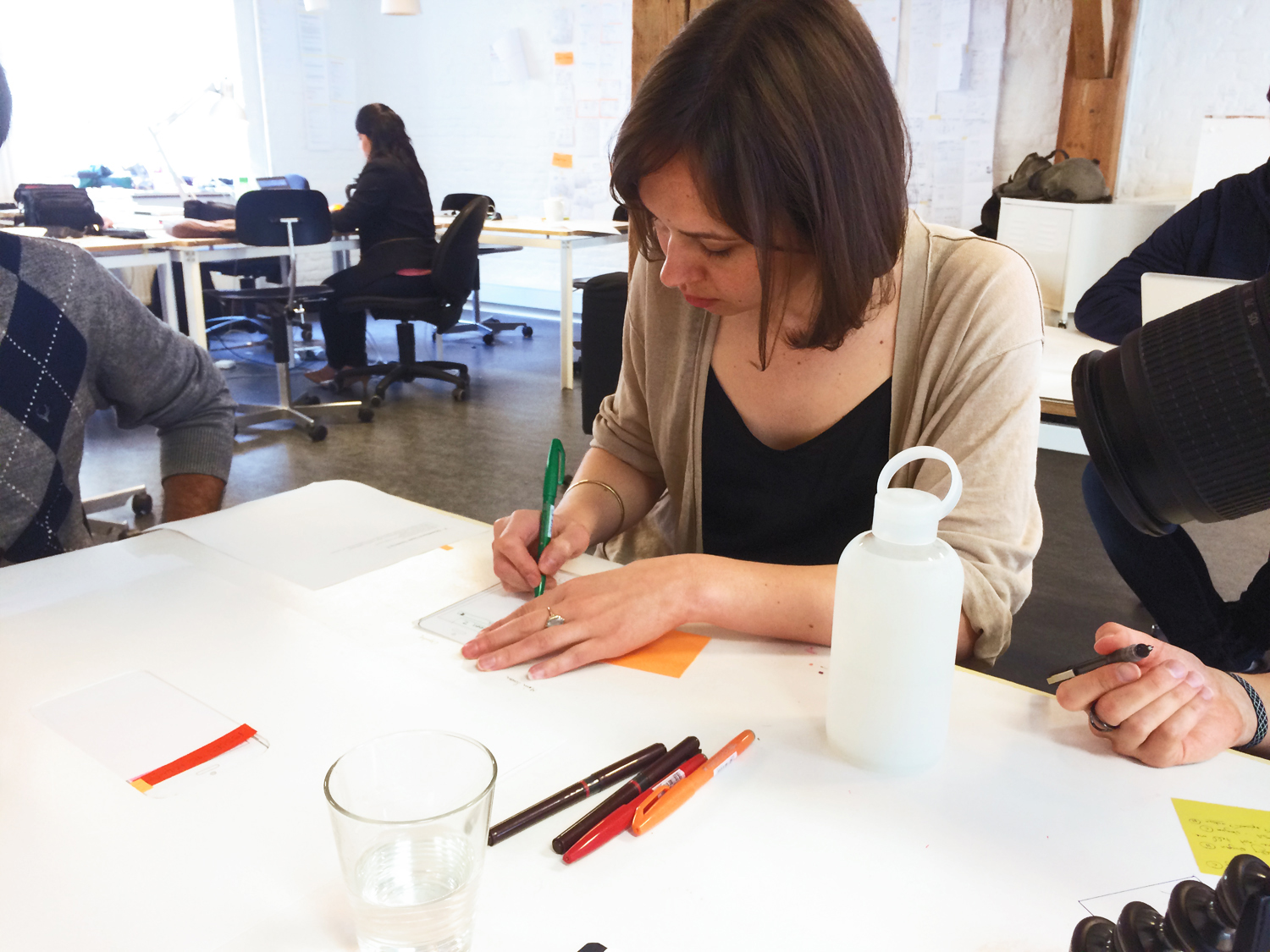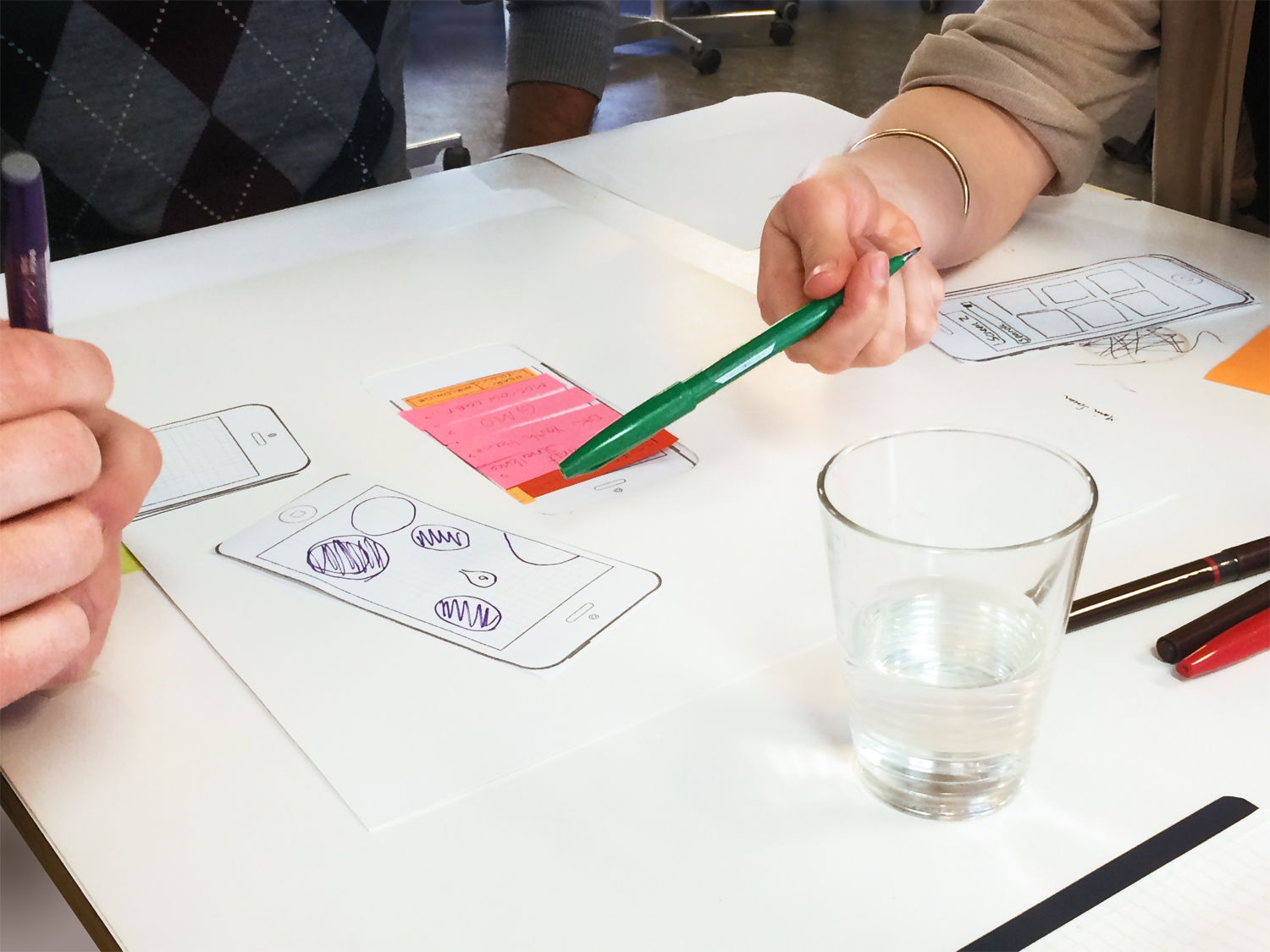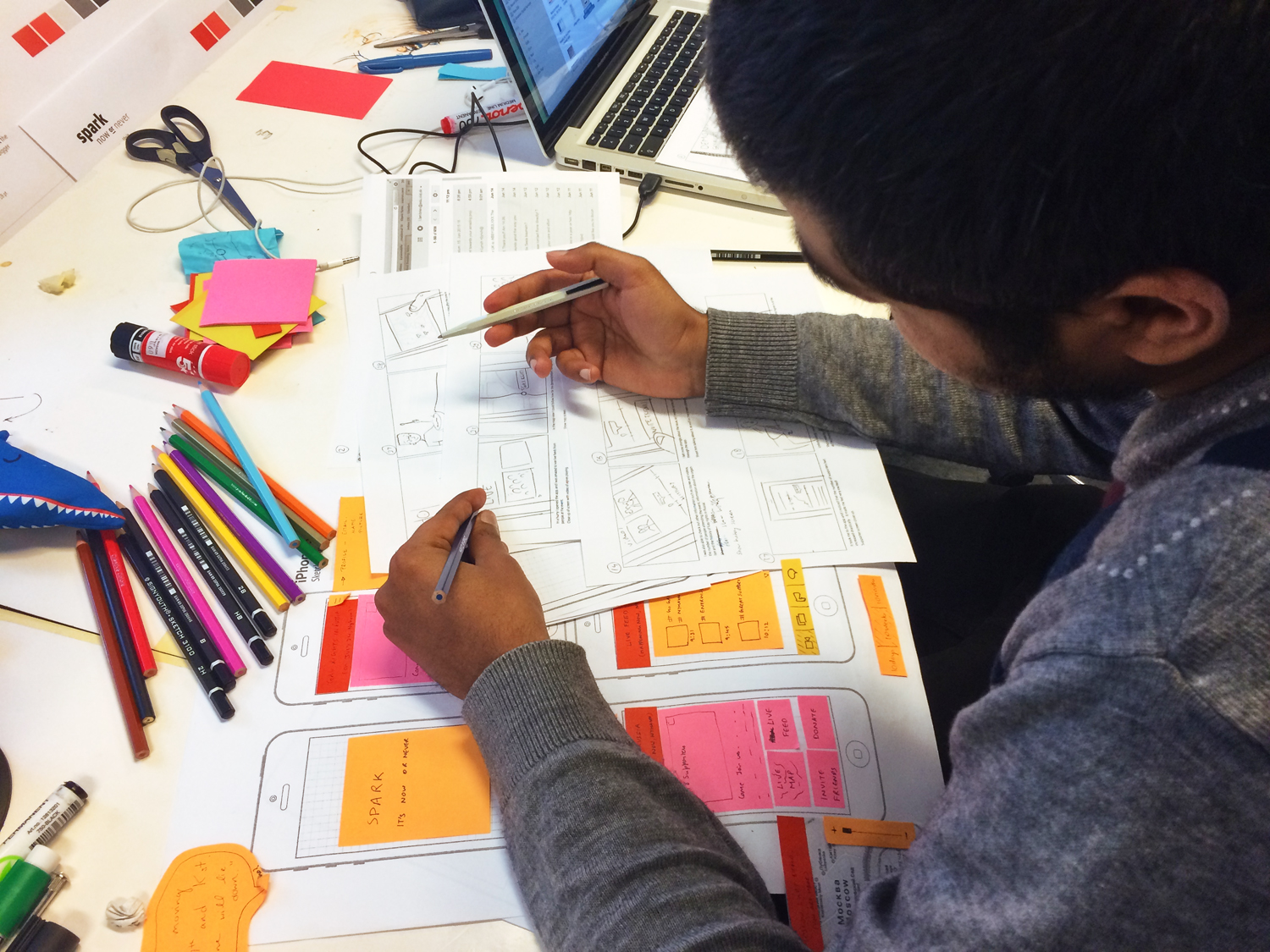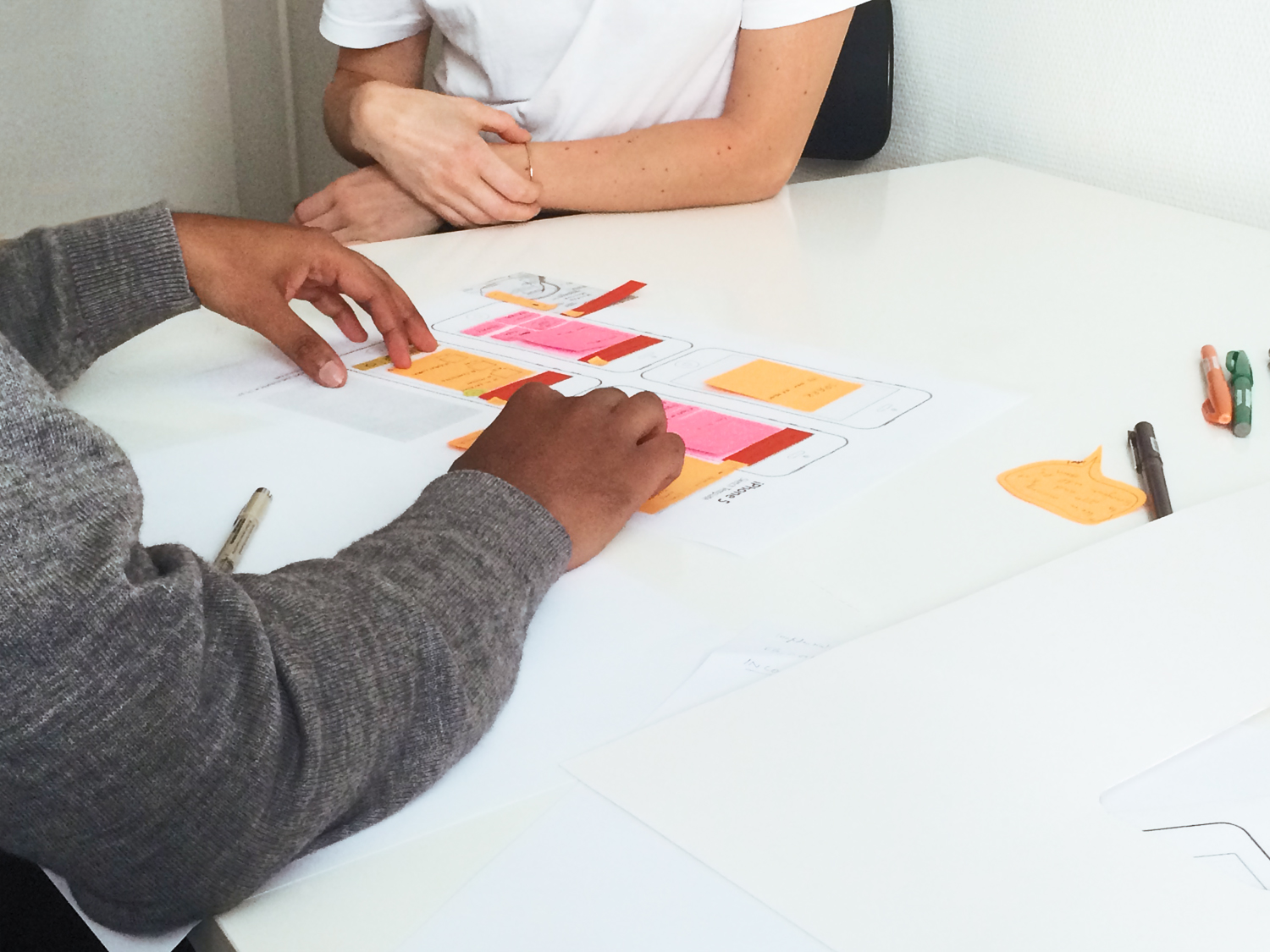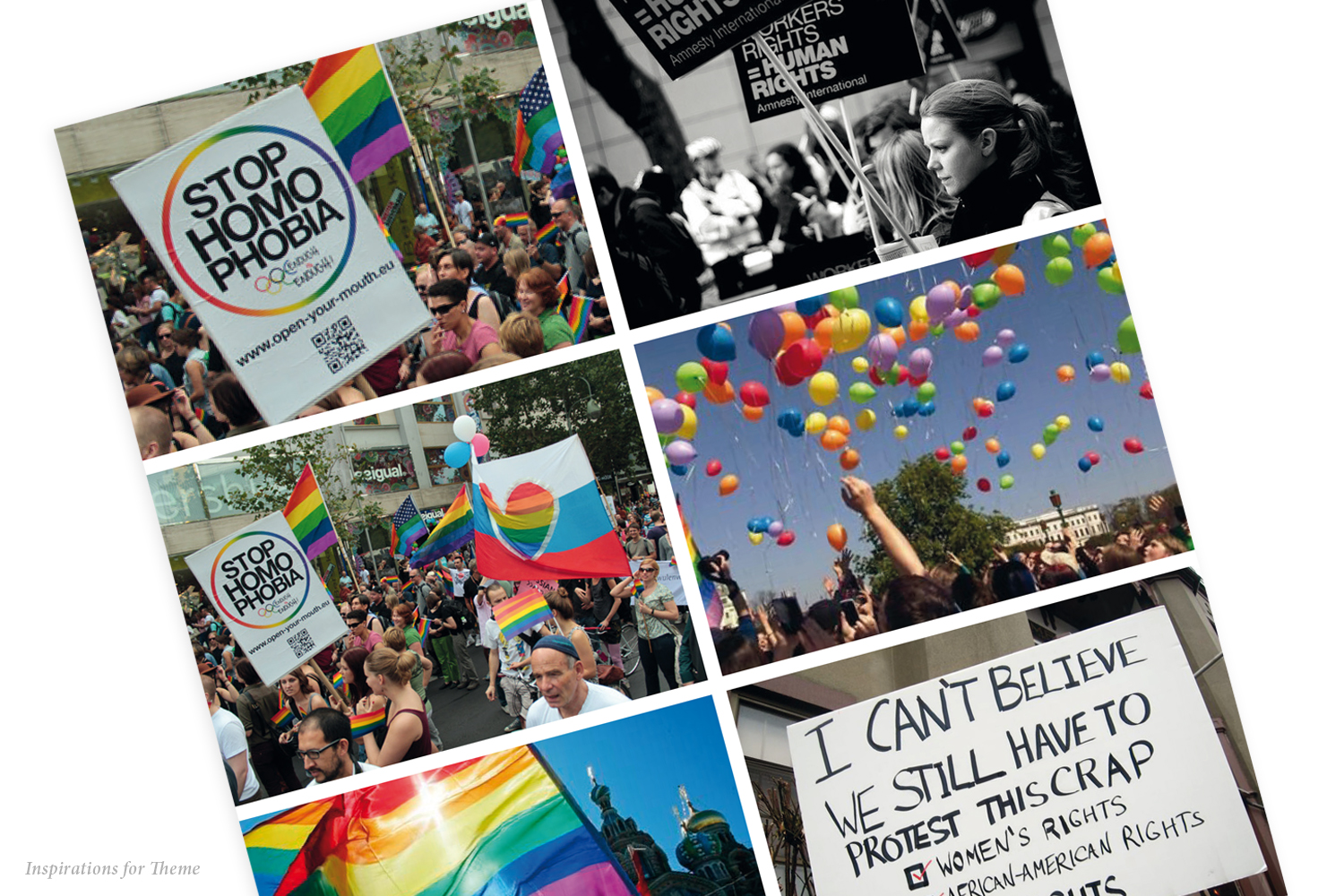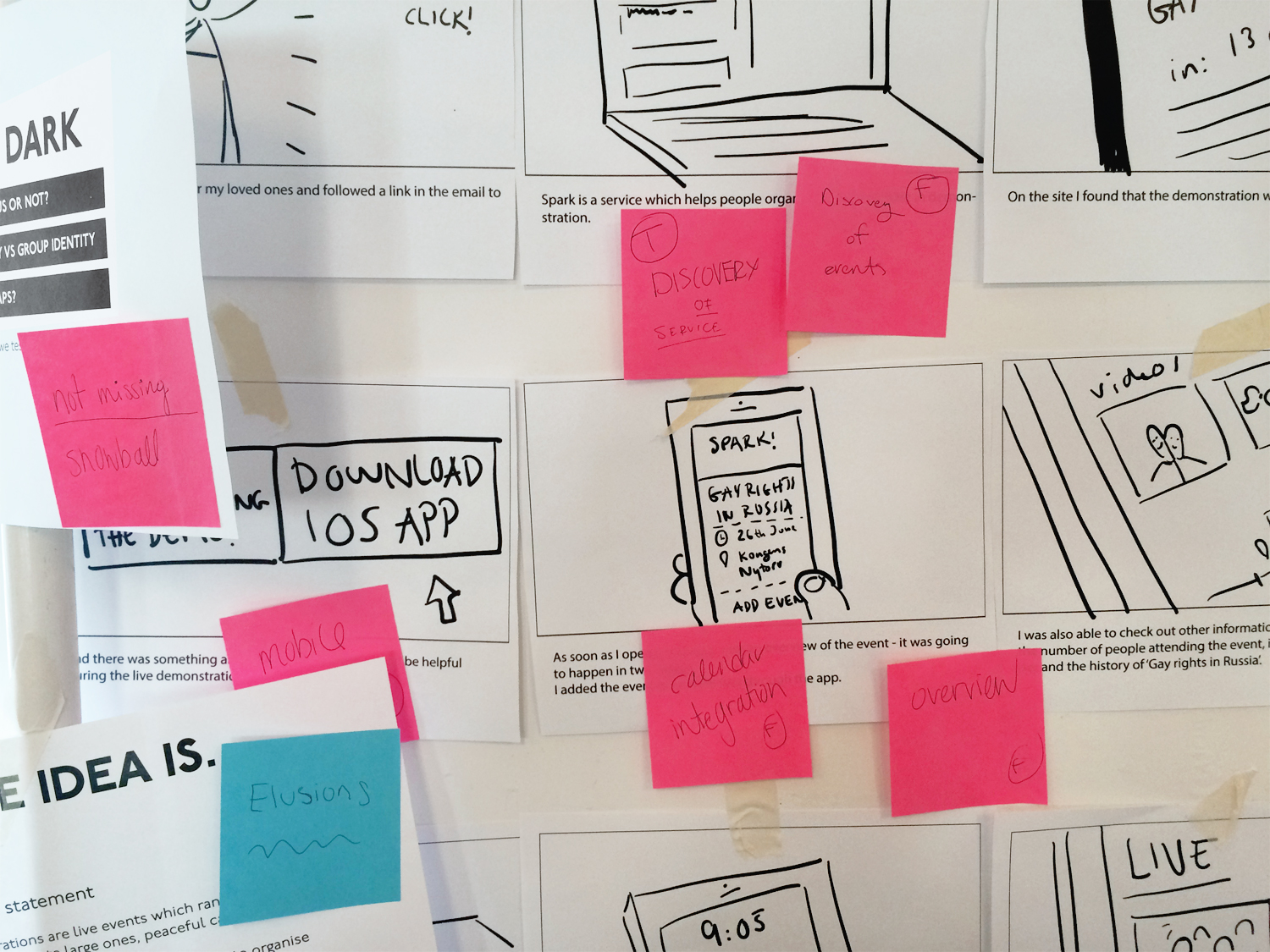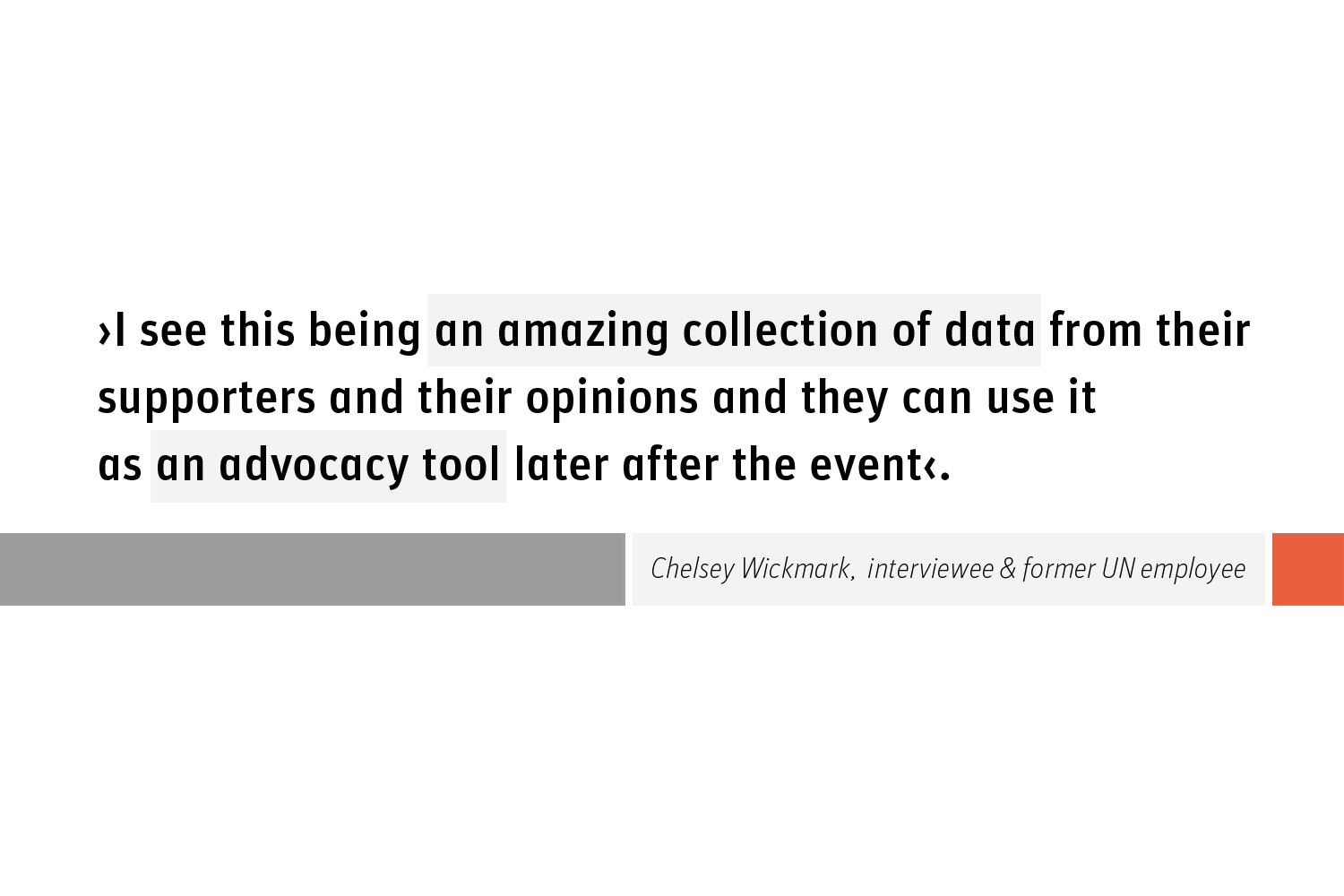Chapter 3. Spark
a service to potentially motivate people to participate in demonstrations, as well as follow them and track the impact of attending.
“Whatever you can do, or dream you can, begin it. Boldness has genius, power and magic in it. Begin it now!
”
Project Description
Opportunity
Demonstrations are live events, which range from small get-togethers to large gatherings and from peaceful candlelight marches to agitated protests. It is equally challenging to organize them as to follow them as an outside spectator. Many people care for a cause but do not necessarily attend due to a lack of time or information.
What motivates people to join demonstrations? What are their greatest needs at live events, and what makes them act, stand up, or raise their voice as important part of the community? Concluding out of guided interviews the team Dhruv Saxena, Sierra Nelmes, Line Birgitte Borgersen and Liliana found people need to feel a specific sense of urgency in order to ‘act now’. Since they really like to see the impact they can make, having information of attendees, images and videos, routes in a live view, and tracking the effects of the demonstration would foster motivation and involvement immensely.
SOLUTION
›Spark‹ is a service, which not only helps to organize demonstrations but also inspires people to participate. Enabling users to follow them easily during the events and track the effect of attending in the bigger scheme of things.
The layout of the application is designed to distribute and deliver information in chunks. For this reason, the team considered tying the service to a news portal, updating people at all times. The news flow ensures the user can follow events and see trending or most pressing issues highlighted or chronologically ranked while being ready for ‘at this moment’ live events at the same time. To communicate the brand proposition of ›Now or Never‹, it’s notion runs through the application as common theme. Starting on the landing page the animated logo initiates activity, while following the impact of a possible snowball effect after a successful demonstration encourages and maintains action.
PROCESS
The low-fi prototype strategy worked well opening participants’ views for the topic. The idea what to display was more efficiently delivered on one screen at a time instead of showing the wireframe sequence in full. A cover for the prototype was created to show frames step by step. In this new approach, participants were shown a first header of the screen, which gave them a little introduction. They were then asked to draw what information they would like to see on that screen. The sketches were uncovered and compared, allowing the team to discuss new possibilities to deliver the key idea.
Project Details
The Team
The project was realized with Dhruv Saxena, Sierra Nelmes and Line Birgitte Borgersen.
Expertise
Research, Co-Creation, Prototyping, Concept, Visuals (User Interface, Logo Design, Graphic Props), Service Design
Date | Duration
Completed in 2 weeks (June 2015) as part of the ›Emotive Digital Services‹ course at CIID (Copenhagen Institute of Interaction Design).
MUSIC CREDIT
›Happiness Is‹ – Podington Bear
MILESTONES | HIGHLIGHTS
Following the results of the process, to design and enhance the User Interface step by step was an enriching experience for Liliana. The circular process of building low fidelity prototypes, getting feedback from the user pool, and reiterating the prototypes with slowly increasing fidelity was continued for a week before decisions were made on the final key features of the service. Proceeding, design iterations of the application in higher fidelity started to be evolved on screen. Understanding the goals and context-of-use of potential users led the design to its final state and success.
LEARNINGS | FALLBACKS
The entire team was constructed out of thinking partners who weren't necessarily echo chamber and it turned out to be a fantastic model of collaboration. Working in this specific team constellation was a major advantage for Liliana. Even though her personality is more conciliatory, she came to acknowledge conflict as an opportunity to learn and to think together, even in times that weren’t necessarily harmonious. So, what does that kind of constructive conflict require? Finding ways to engage with each other and to establish an atmosphere where individual creativity is allowed to flourish. Also a lot of patience and energy; it meant that each individual team member had to be prepared to change their minds.
SPECIAL THANKS TO
Ulrik Hogrebe (Course Instructor)
Jacek Barcikowski (Course Instructor)


